General Dynamics Electric Boat (GDEB) is a subsidiary of General Dynamics Corporation. It has been the primary builder of submarines for the United States Navy for more than 100 years. The company's main facilities are a shipyard in Groton, Connecticut, a hull-fabrication and outfitting facility in Quonset Point, Rhode Island, and a design and engineering facility in New London, Connecticut.
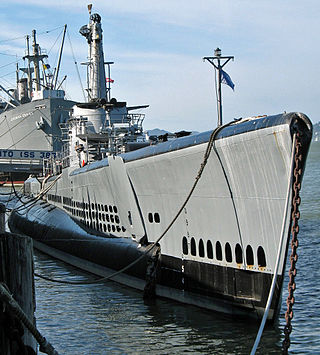
USS Pampanito (SS-383/AGSS-383), a Balao-class submarine, is a United States Navy ship, the third named for the pompano fish. She completed six war patrols from 1944 to 1945 and served as a United States Naval Reserve training ship from 1960 to 1971. She is now a National Historic Landmark, preserved as a memorial and museum ship in the San Francisco Maritime National Park Association located at Fisherman's Wharf in San Francisco, California.
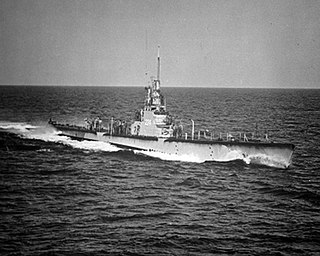
USS Cod (SS/AGSS/IXSS-224) is a Gato-class submarine, the only vessel of the United States Navy to be named for the cod, an important and very popular food fish of the North Atlantic and North Pacific oceans. She was launched on 21 March 1943, and commissioned on 21 June 1943.
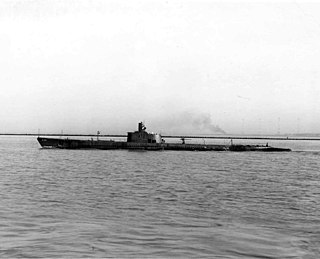
USS Silversides (SS/AGSS-236) is a Gato-class submarine, the first ship of the United States Navy to be named for the silversides.

USS Cavalla (SS/SSK/AGSS-244), a Gato-class submarine, is a submarine of the United States Navy named for a salt water fish, best known for sinking the Japanese aircraft carrier Shōkaku.
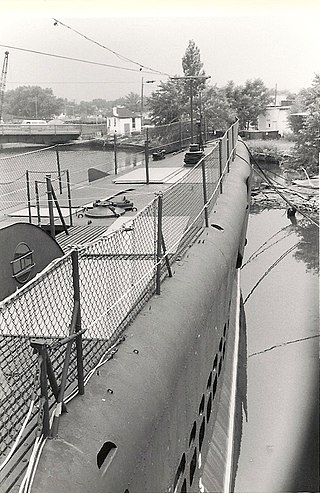
USS Ling is a Balao-class submarine of the United States Navy, named for the ling fish, also known as the cobia. The vessel was built during World War II, but was completed in the final months of the conflict and so saw no action. She was placed in reserve in 1946 until being converted into a training ship in 1960. In 1971, she was struck from the naval register and donated to the Submarine Memorial Association for use as a museum ship. The ship was grounded in the Hackensack River at the former location of the defunct New Jersey Naval Museum in Hackensack, New Jersey. Since 2016, Ling has been inaccessible to the public.

USS Requin (SS/SSR/AGSS/IXSS-481), a Tench-class submarine, was the only ship of the United States Navy to be named after the requin, French for shark. Since 1990 it has been a museum ship at the Kamin Science Center in Pittsburgh, Pennsylvania.

USS Croaker (SS/SSK/AGSS/IXSS-246), a Gato-class submarine, was the first ship of the United States Navy to be named for the croaker, any of various fishes which make throbbing or drumming noises.
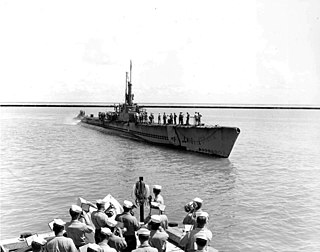
USS Cabrilla (SS/AGSS-288), a Balao-class submarine, was a ship of the United States Navy named for the cabrilla, an edible fish inhabiting the Mediterranean Sea and waters off the coast of California.

USS Manta (SS/ESS/AGSS-299), a Balao-class submarine, was the first submarine and second ship of the United States Navy to be named for the manta.

USS Roncador (SS/AGSS/IXSS-301), a Balao-class submarine, was a ship of the United States Navy named for the roncador.

USS Becuna (SS/AGSS-319), a Balao-class submarine in commission from 1944 to 1969, was a submarine of the United States Navy named for the becuna, a pike-like fish of Europe. During World War II, she conducted five war patrols between August 23, 1944 and July 27, 1945, operating in the Philippine Islands, South China Sea, and Java Sea. She is credited with sinking two Japanese tankers totaling 3,888 gross register tons.

USS Carp (SS/AGSS/IXSS-338), a Balao-class submarine, was the second ship of the United States Navy to be named for the carp.

The first USS Spadefish (SS/AGSS-411), a Balao-class submarine, was the first ship of the United States Navy to be named for the spadefish. Although she was commissioned late in the war and spent only one year in the Pacific war zone, she was able to run up a record of 88,091 tons in 21 ships and numerous trawlers sunk.

USS Sea Owl (SS/AGSS-405), a Balao-class submarine, was a ship of the United States Navy named for the sea owl, a lumpfish of the North Atlantic Ocean.
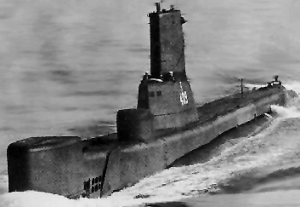
USS Piper (SS/AGSS-409), a Balao-class submarine, was a ship of the United States Navy named after the piper. Although built late in World War II, Piper completed three successful war patrols before the cessation of hostilities, operating as a life guard for plane strikes and as an advance picket for fast carrier task forces.
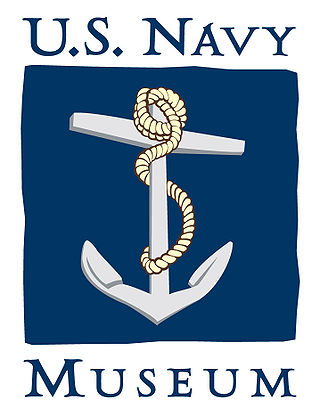
The National Museum of the United States Navy, or U.S. Navy Museum for short, is the flagship museum of the United States Navy and is located in the former Breech Mechanism Shop of the old Naval Gun Factory on the grounds of the Washington Navy Yard in Washington, D.C., United States.

USS Stewart (DE–238) is an Edsall-class destroyer escort, the third United States Navy ship so named. This ship was named for Rear Admiral Charles Stewart, who commanded USS Constitution during the War of 1812. Stewart is one of only two preserved destroyer escorts in the U.S. and is the only Edsall-class vessel to be preserved. She is on display in Galveston, Texas as a museum ship and is open to the public.

Seawolf Park is a memorial to USS Seawolf (SS-197), a United States Navy Sargo-class submarine mistakenly sunk by U.S. Navy forces in 1944 during World War II. It is located on Pelican Island, just north of Galveston, Texas, in the United States. The park has two museum ships, submarine and a destroyer escort, along with parts from three other vessels and offshore the remains of a former merchant ship. Other activities at the park include a picnic area and fishing.